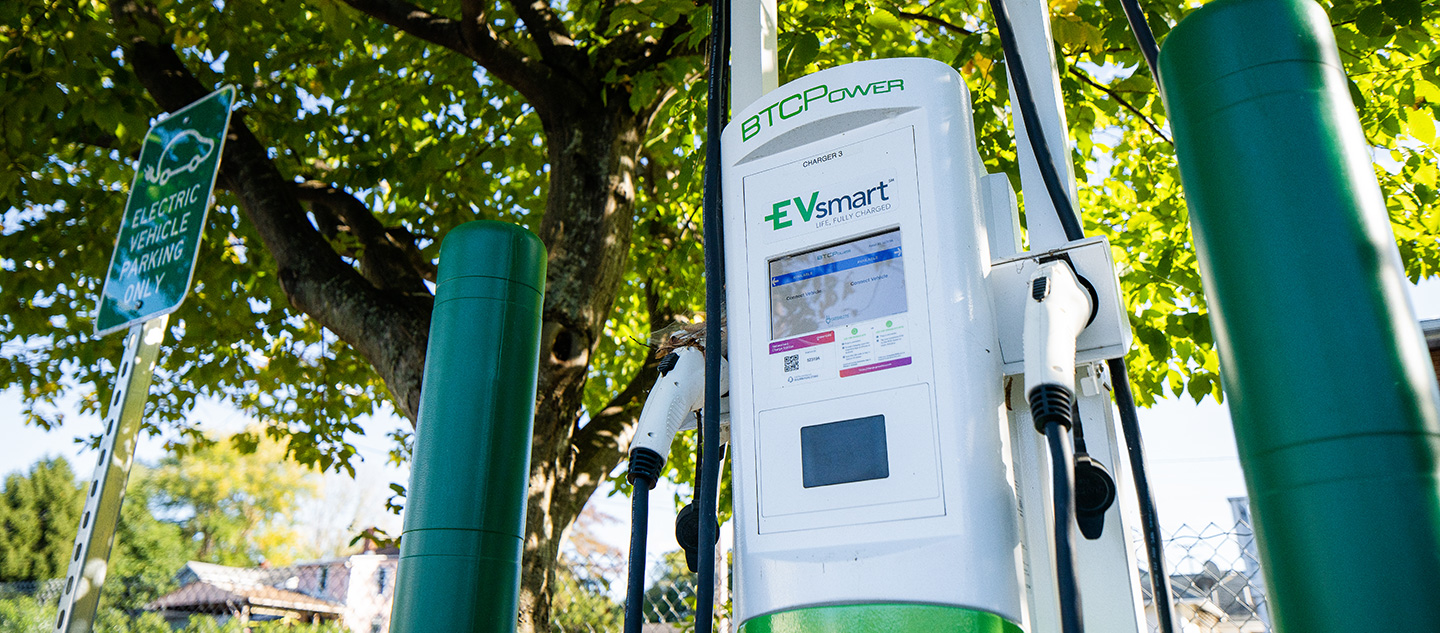According to the U.S. Energy Information Administration, the U.S. consumed about 17% of the world’s primary energy in 2018. In order to supply energy on such a grand scale, our power grid needs to be resilient to climate stressors such as extreme
storm events. One critical aspect of energy resilience is creating redundancy in our power grid to keep the duration of power outages for consumers at a minimum. Utility companies have spent a lot of time and money to install circuits so that when
a power line goes out in a storm event, for example, the number of impacted consumers is minimized. In addition to upgrades to the circuits and grid, utility companies have also hardened their structures to prevent power stoppages. These resilient
factors will need to be carried over as the power grid expands to make way for sustainable power sources such as offshore wind and solar energy, as well as for expanding energy infrastructure such as electric vehicle charging stations.
Integrating Sustainable Power Sources into a Resilient Grid
Traditionally, utilities have used a one-way model for power distribution that involved distributing electrons to commercial and residential users for consumption directly from generation plants. As renewable energy sources such as solar energy and offshore
wind continue to expand, utility entities and engineers need to find ways to integrate these power sources into the grid. Energy storage options must also be considered for some of these projects to improve electrical load management.
At Dewberry, we support a number of power utility companies along the East Coast, including New Jersey, Maryland, Virginia, North Carolina, South Carolina, and Florida, to help maintain the transmission and distribution grid system. By incorporating the
latest design and technology, whether in stormwater practices, site/civil design, survey/mapping, environmental assessments, or permitting, we are able to assist utility companies in designing and constructing portions of the grid and the support
infrastructure around it to be more resilient.
In Northern Virginia, for example, we are designing concrete-encased underground electrical duct banks with 8-inch conduits and the capacity to carry multiple lines. These duct banks frequently connect from electrical substations directly to customers,
including growing residential communities and the region’s proliferation of data centers. Underground duct banks, as well as the “strategic undergrounding” of overhead lines, reduce power disruption to customers during severe weather
events. In some cases, we have helped design onsite substations to serve data centers and other customers requiring a high capacity of power, providing critical assets as close to the demand as possible to limit infrastructure costs and potential
for failure.
By incorporating sustainable energy infrastructure into the initial planning and coordination of our utility projects, we can better navigate the challenges and complexities of an ever-expanding energy grid."
Doug Sullivan
 We assist utility companies with the design of electric vehicle charging stations such as the Park & Ride in Havre De Grace, Maryland.
We assist utility companies with the design of electric vehicle charging stations such as the Park & Ride in Havre De Grace, Maryland.
Accommodating the Growing Number of Electric Vehicle Installations
The growing number of electric vehicle charging stations throughout the country will also require a resilient power grid structure. As with solar array installations, we are helping electric vehicle project developers coordinate with utilities to get
approval to tie their new installations into the grid. We assist utility companies in collaborating with private developers and nationwide corporations that own electric vehicle fleets and are seeking to reduce their greenhouse gas emissions. We also
help utility companies design their own charging stations.
By incorporating sustainable energy infrastructure into the initial planning and coordination of our utility projects, we can better navigate the challenges and complexities of an ever-expanding energy grid.